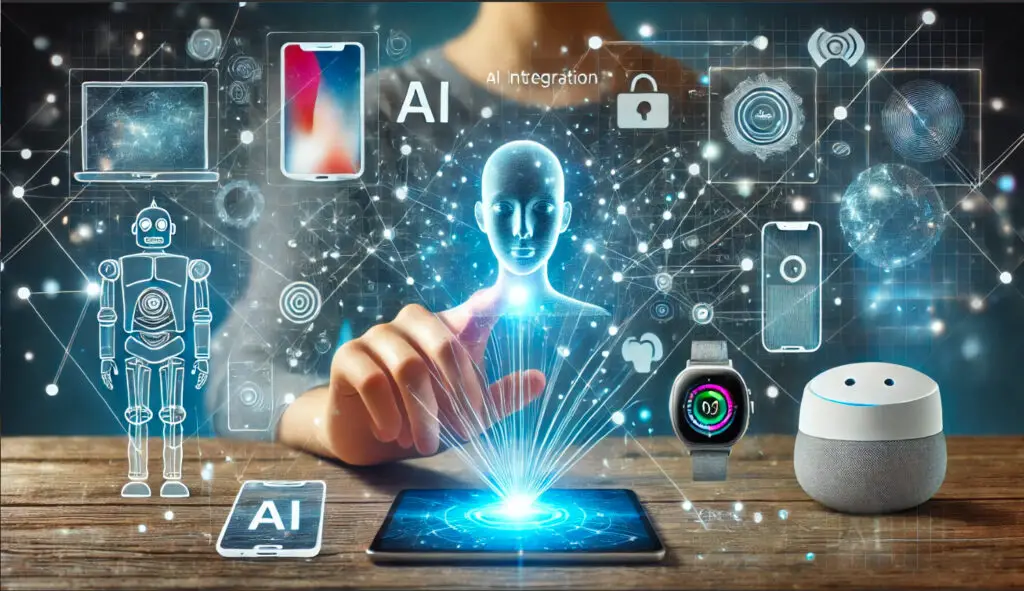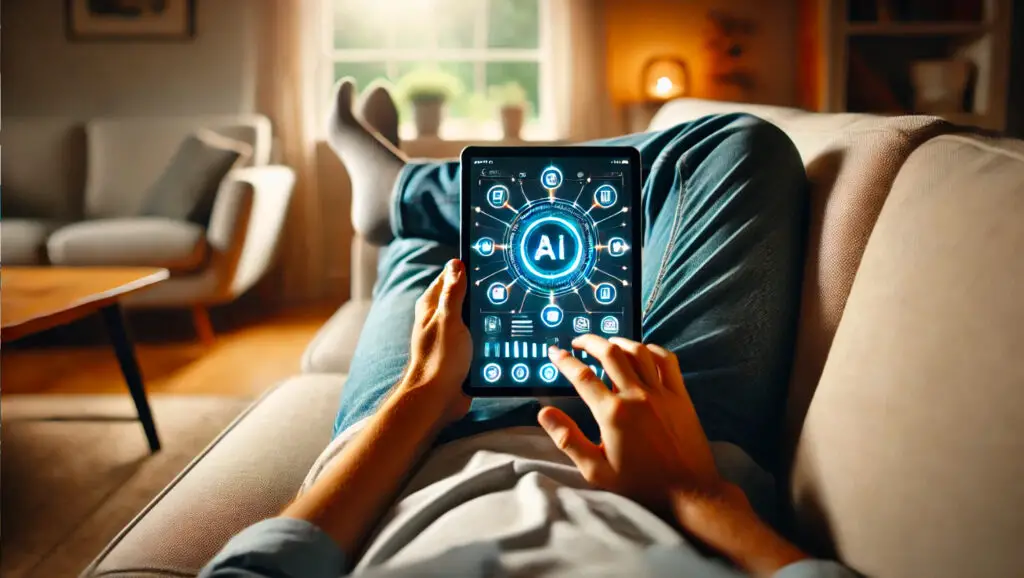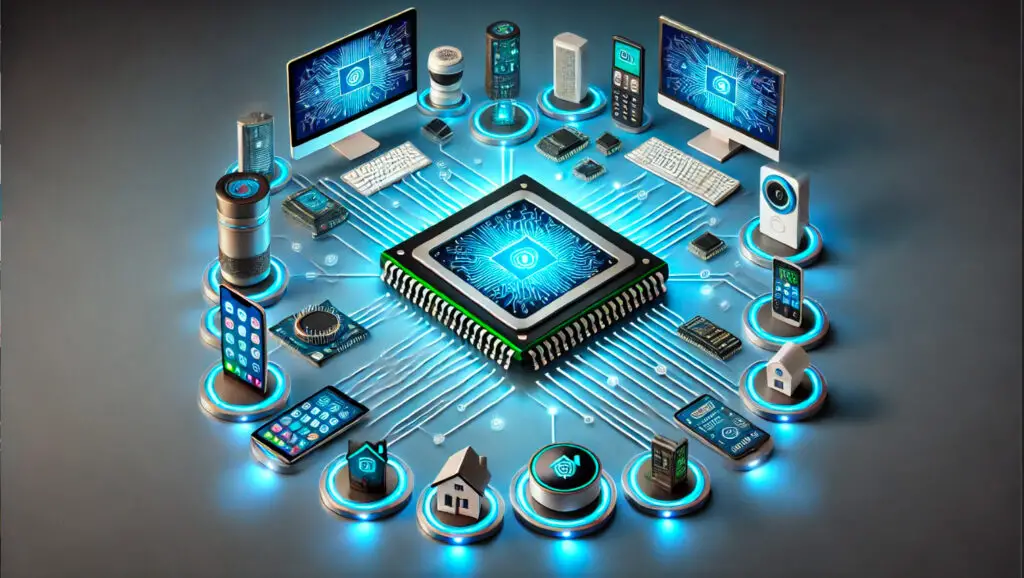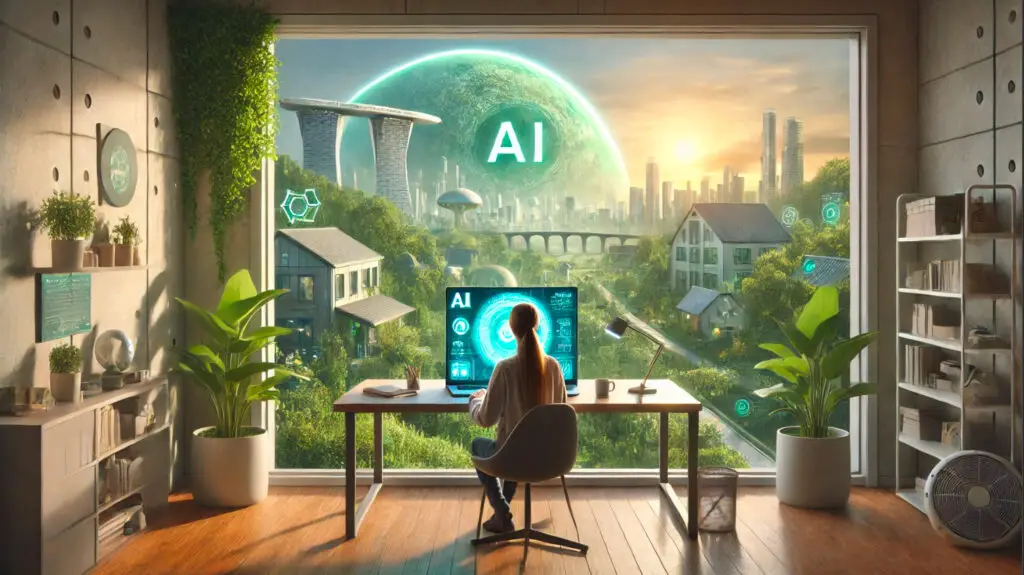
Today’s devices are doing more than just working for you—they’re anticipating your needs and adapting to your preferences. With artificial intelligence (AI) leading the charge, our smartphones, tablets, and computers are becoming smarter, faster, and more attuned to our needs than ever before. Artificial intelligence (AI) is turning that vision into reality, revolutionizing how we use smartphones, tablets, and computers. By making these devices smarter, faster, and more intuitive, AI has become an integral part of our daily lives, reshaping the way we communicate, create, and connect. With constant advancements, AI is expanding beyond simple functionalities like basic automation and task management, integrating deeply into the fabric of our favorite gadgets by enabling advanced features such as real-time language translation, personalized recommendations, and sophisticated data analysis. This blog explores how AI is reshaping our devices and what exciting developments lie ahead.
AI in Smartphones: Smarter Everyday Tools
Smartphones have become essential companions, and AI continues to enhance their utility in ways that feel almost magical.
1. Smarter Assistants
Voice assistants like Siri and Google Assistant are now capable of handling increasingly complex tasks, such as setting multi-step reminders, providing contextual travel recommendations, integrating with smart home devices for automation, and even offering detailed fitness guidance tailored to your routine. They manage context-aware conversations, provide recommendations based on your habits, and seamlessly integrate with third-party apps for enhanced control over music, emails, and smart devices.
2. Camera Intelligence
The camera is no longer just a tool to take photos—it’s an AI powerhouse. Features like portrait mode, night vision, and advanced HDR leverage AI for professional-quality results. Modern AI-driven computational photography adjusts exposure, contrast, and color balance in real-time. Video recording enhancements, such as dynamic stabilization, live filters, and subject tracking, also showcase the power of AI.
3. Personalized Features
AI adapts to individual user habits to deliver a truly customized experience. For instance, predictive text learns your writing style to suggest relevant words, while music apps like Spotify analyze listening patterns to craft personalized playlists. Fitness trackers use activity data to recommend tailored workout routines and health plans.

AI in iPads and Tablets: Creativity Meets Productivity
iPads and tablets are go-to devices for creators and professionals, and AI is pushing their capabilities to new heights.
1. Enhanced Creativity
AI-powered apps like Procreate and Adobe Fresco allow artists to unlock their creative potential. With realistic brush simulations, smart fill tools, and automated background removal, artists can focus on their vision without technical hurdles. The Apple Pencil’s AI integration enhances precision, predictive stroke, and pressure sensitivity, offering an almost pen-on-paper experience.
2. Smarter Productivity
For students and professionals, AI-enabled tools simplify workflows. Handwritten notes become searchable with apps like GoodNotes, while adaptive learning platforms like Duolingo personalize lessons based on progress. AI’s predictive multitasking further streamlines operations, anticipating the next app or tool you’ll need.
3. Augmented Reality (AR)
AI and AR integration transform how we interact with the world. Apps like IKEA Place let users visualize furniture in their homes, while educational tools use AR to provide immersive lessons, such as virtual dissections or astronomy explorations.
AI in Computers: Boosting Performance and Security
Laptops and desktops are becoming smarter and more secure, thanks to advanced AI capabilities.
1. Productivity Tools
AI streamlines routine tasks on operating systems like Windows and macOS, such as managing file organization, automating email sorting, scheduling updates, and providing intelligent suggestions for document editing and formatting. Applications like Grammarly refine written communication, while collaboration tools like Notion use AI to enhance team workflows and manage tasks effectively.
2. Gaming and Graphics
AI has redefined the gaming experience. NVIDIA’s DLSS technology delivers stunning graphics by upscaling resolutions without taxing hardware. In creative industries, AI in software like Adobe Premiere Pro automates tedious processes such as scene transitions, object removal, and color grading, saving professionals hours of work.
3. Enhanced Security
Cybersecurity is a critical area where AI shines. Biometric authentication using facial recognition or fingerprints ensures secure access to your data. AI also detects and neutralizes threats by analyzing patterns to identify phishing attempts, malware, or suspicious activities.

Cross-Device AI Ecosystems
The magic of AI truly unfolds when devices work together seamlessly, creating a cohesive ecosystem that enhances productivity and convenience.
1. Unified Assistance
AI assistants now sync across multiple devices, allowing you to continue tasks wherever you go. For instance, you can start a presentation on your laptop and pick up where you left off on your tablet, with suggestions from the assistant to improve efficiency.
2. Smart Home Integration
Smartphones, tablets, and computers serve as control hubs for smart home ecosystems. AI ensures devices learn your habits, automating actions like dimming lights or adjusting the thermostat based on time or occupancy.
3. Effortless Collaboration
Cross-platform tools like Apple’s Universal Control and Microsoft’s cloud-based frameworks allow seamless collaboration. Drag-and-drop functionality across devices and real-time updates to shared documents are now commonplace, powered by AI.
Challenges and Ethical Concerns
Despite its advantages, AI integration also presents challenges and ethical questions. Companies and developers are actively working to tackle these issues by implementing robust privacy protocols, designing inclusive algorithms to minimize bias, and educating users about the responsible use of AI. For example, advancements in encryption ensure safer data storage, while open AI frameworks encourage collaborative problem-solving to create fairer systems. These efforts aim to balance innovation with ethical considerations, paving the way for responsible AI development.
- Data Privacy: AI relies on large volumes of data, raising concerns about how personal information is collected and used.
- Bias: Ensuring AI algorithms are free of bias and inclusive is an ongoing challenge.
- Dependency: Over-reliance on AI could diminish critical thinking and creativity.
The Future of AI in Devices

AI continues to evolve, promising even greater innovations in the future.
1. Hyper-Personalization
Devices will use AI to anticipate user needs more accurately, from customizing app interfaces to offering hyper-relevant recommendations.
2. Advanced Health Features
AI will expand health monitoring capabilities, detecting early signs of illnesses, offering mental health support, and providing personalized fitness coaching.
3. Edge AI
Local data processing, or edge AI, will reduce latency, improve privacy, and make devices more efficient by eliminating the need for constant cloud connectivity.
4. Immersive AR/VR
AI-driven AR and VR will create more realistic and interactive experiences, revolutionizing gaming, education, and remote work.
5. Sustainable AI
Energy-efficient AI technologies will reduce the environmental impact of smart devices, contributing to a sustainable tech ecosystem.
Conclusion: Embracing AI
AI integration in smartphones, tablets, and computers is not just an upgrade—it’s a transformation. By making devices smarter, more intuitive, and interconnected, AI enhances every aspect of our digital lives. While challenges exist, the potential benefits promise a seamless, tech-driven future.
What are your thoughts on AI’s impact on your favorite devices? Share your experiences and let us know how AI has made your life easier in the comments below!
